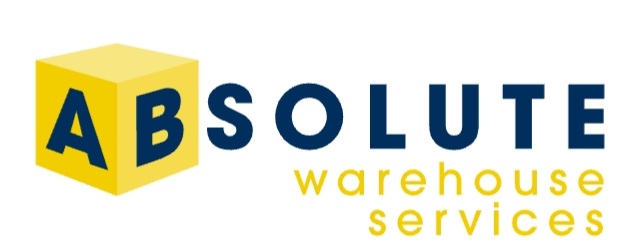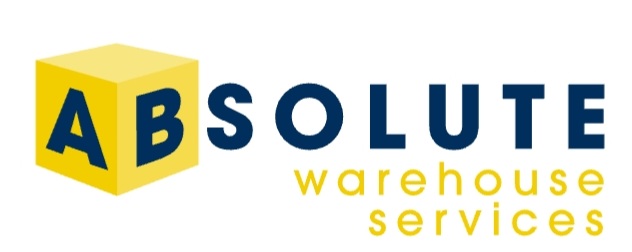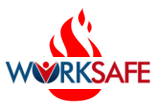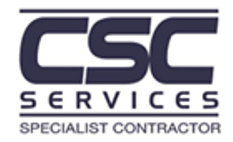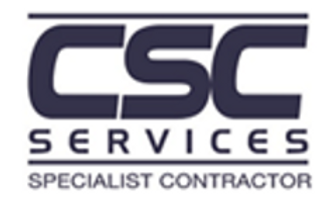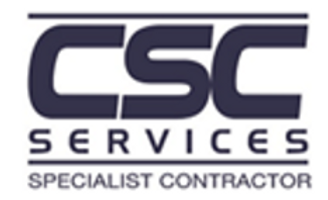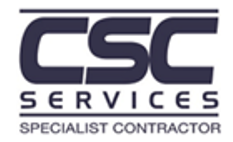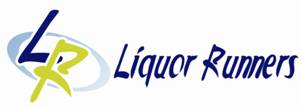Title Page
-
Client
-
Building
-
Location/Site
-
Conducted on (Date and Time)
-
Inspected by
General Inspection
General Information
Materials and Products Stored
-
undefined
Documentation
-
HSE poster displayed
-
Are all warehouse operatives inducted?
-
RAMS (risk assessments & method statements) available, signed and understood by operatives?
-
Any training requirements identified?
-
Does the notice board have all the required information present? Company rules, safety alerts, H&S policy, insurances etc?
First Aid
-
Appointed person or first aider available in the warehouse?
-
Appointed/first aider named and displayed in a prominent place?
-
Accident book available for everyone?
-
First aid box and eye wash available, accessible and stocked and all items within date?
Fire Arrangements
-
Nominated fire marshal in the warehouse? Is the nominated person details displayed in a prominent place?
-
Fire extinguishers available and the right type?
-
Fire extinguishers in service date, in good condition and in a prominent place?
-
Warehouse evacuation fire plan displayed with information of access routes and assembly points?
-
Appropriate fire signage displayed ie muster point?
-
Are all emergency exits clear of blockage and are the exit signs in good condition? <br>• Inspect both inside and outside for blockage of the exits. <br>• All exit signs should be lit & all emergency lights tested.
Welfare facilities
-
Welfare facilities clean and tidy?
-
Is there means of heating food?
-
Is there plenty of seating?
-
Is there drinking water available?
Pedestrian/ traffic segregation
-
Is there designated floor markings in good condition?
-
Are barriers and railings in good condition?
Forktruck documentation
-
Daily checklist completed for the forktruck?
PPE
-
Everyone wearing the appropriate mandatory PPE?
-
Are all employees using suitable personal protective equipment when handling chemicals?
Spill kits available
-
Spill kits available to prevent spillages from plant/vehicles?
COSHH
-
Are all chemicals stored according to the manufacturer’s recommendations and local or national fire codes. (i.e. flammable cabinets, cans, etc.)?
-
All hazardous materials' containers are properly labelled?<br>• Indicated chemical’s identity, the manufacturer’s name and address, and appropriate hazard warnings.
Waste management
-
Is all waste generated being disposed off in appropriate waste bins/skips?
General Warehouse Areas
-
Are aisles clear and open for material transfers? <br>• No product shall be stored in aisles where it blocks equipment maneuvering.
-
Are designated open areas clear of blockage? <br>• Such areas include 18 inch perimeters along interior walls as well as electrical panels and eye wash units.
-
Are all pallets in good condition? <br>• Empty pallets must be stored properly. <br>• No broken or protruding wood or nails. <br>• No pallets on edge.
-
Are overhead lighting, skylights, and roofs in good condition? <br>• Check for leaks, broken panels/light bulbs, and missing bulb shields.
-
Are loose/unboxed materials stacked properly?<br>• Properly stored by blocking, interlocking or limiting the height of the pile.<br>• Insure product stack heights are inforced to prevent container crushing and falling materials.
-
Are all bags, containers, bundles, etc. stored in tiers that are stacked, blocked, interlocked and limited in height? <br>• Stable and secure to prevent sliding or collapse.
-
Are guardrails and/or covers provided to protect personnel from the hazards of open sides of stairs, platforms, floor openings, floor holes, mezzanines, equipment pits, and other possible fall hazards?
-
Are all employees use the proper lifting technique for the materials being handled?
-
Products and containers that are most frequently moved by hand are stored at rack heights that minimize bending / stooping or excess reach to pick up or place?
-
Lighting in the warehouse suitable and sufficient?
-
Is the warehouse floor conditions in good condition?
-
Any other safety observations?
Untitled page
Work areas (Exterior and Interior)
Work areas (Exterior)
-
Are approach roads and staging areas (yard) clear for maneuvering, well drained, free of potholes and are all signs in place and legible?
-
Is the approach to the dock well drained and free from potholes or other obstructions? <br>• Pay particular attention to snow, ice, storm water and debris build up.
-
Are dock positions clearly marked with painted lines that the drivers can see to help them spot their trailer accurately?
-
Are all exterior lights working properly? <br>• This item will need to be inspected during the evening when lights are functioning.
-
Are wheel chocks and/or trailer restraint systems working properly? <br>• If trailer restraint systems are in use remember to inspect for proper locking and indicator light function both inside and outside. <br>• Ensure tractors are disconnected from trailer.
-
Are "attractive nuisances" controlled or removed from around the facility? <br>• An attractive nuisance is any feature that might attract children, vandals, vagrants or other undesirable activities (i.e. concrete culverts, stacks of pallets, etc.).
-
Any other safety observations?
Work areas (Interior)
-
Are visitors and drivers remaining in designated safe areas and walkways?
-
Are all interior overhead lights and trailer lights in the dock area operating properly? <br>• Test all lights that might be off at time of inspection to be sure they work properly
-
Do dock doors work properly and close completely? <br>• Ensure that all doors in use open and close smoothly. <br>• Inspect automatic stops and auto-reversing functions on powered doors
-
Is there sufficient room to manoeuvre materials? <br>• Dock area floors should be clean and free of trash, debris, or stored items that block the safe passage of loaded equipment
-
Are there sufficient waste bins for the area and and emptied on a regular basis? <br>• In general, floors, ceilings, and exhaust fans are clean and free of cobwebs and dust buildup.
-
Is there adequate natural or mechanical ventilation to control any potential atmospheric hazards? <br>• Where propane-powered equipment is in use, the ventilation must be tested to rule out excess carbon dioxide/monoxide. An Industrial Hygienist may need to do testing.
-
Any other safety observations?
Equipment Check
Equipment Checks
-
Are all ladders and hand tools are in good condition? <br>• Remove any unsafe equipment from service while awaiting repair.
-
Is there an in date thorough examination of pressure system(s)?
-
Is there an in date thorough examination certificate for the forklift truck(s)?
-
Are forklifts being operated safely and inspected at the start of every shift? <br>• Observe powered industrial truck operations and review training certifications to confirm operators have been adequately trained and evaluated.
-
Do forklifts have functioning warning devices such as back-up alarms, strobes, or horns? <br>• Test equipment as needed, report repairs,and tag out equipment that is unsafe until repairs are made.
-
Are battery charging/changing areas designated for that purpose and contain appropriate emergency flushing facilities (i.e. eyewash and shower)?
-
Are guards in place for any hazard points on moving equipment such as belt guards on compressors or conveyors? <br>• Inspect all powered work tools as well (i.e. cords, insulation, shrouds, casing, guards, etc.).
-
Are propane tanks stored correctly and are the tank exchange and/or tank filling areas properly maintained? <br>• Appropriate signs are in place and area is free of trash.
-
Are all powered industrial trucks (i.e. forklifts) meet the design and construction requirements established in regulatory standards?
-
Are the original capacity, operation and maintenance instruction plates, tags or decals on powered industrial trucks in place and legible?<br>• All authorized equipment and accessory modifications are also identified on those labels/tags/decals.
-
Forklifts are used in hazardous locations (i.e. around flammable materials) are properly marked / labeled / tagged for the specific hazardous location?
-
Hot Work Permit process or other documented/dedicated processes are in place?<br>• To prevent smoking, welding, grinding or other ignition sources from battery charging functions and other flammable materials areas.
-
Are tools and other spark producing metallic objects kept away from the top of uncovered batteries?
-
Any other safety observations?
Sanitation
Sanitation Inspection
-
Are rodent and other pest control devices in place and in proper working condition? <br>• Look for missing or damaged traps and check fly zappers as well.
-
Is there an adequate cleaning regime in place including covid-19 control measures.
-
Are aisles, wall perimeters, exterior areas near the building, trash cans and dumpsters free of loose trash and debris?
-
Are stored products in good condition and free of spillage / breakage?
-
Any other safety observations?
Training & General Safety
Training and General Safety
-
Are all employees properly trained and is training and certification up to date? <br>• Inspect records to verify training is documented and up to date.
-
Is the health and safety law poster on display and signed?
-
Are personnel trained in the use of abrasive wheels?
-
Are your employees actively and meaningfully involved in workplace safety programs? (i.e. participate in accident investigations, self inspection, committees, etc.)
-
Are accidents, near misses and injuries being investigated and are unsafe conditions being corrected, reported/documented in a timely manner?
-
Are MSDS available to employees and are they up to date and complete?
-
Are all employees properly trained and outfitted for weather/temperature extremes? (i.e. heat stress, cold weather, refrigerated storage areas, etc.)
-
Are newly-hired employees receive documented general material handling and task-specific ergonomics training? <br>• Verify through observations that employees practice safe lifting techniques on the job.
-
Are all employees trained in the requirements of the hazard communication standard?<br>• Including a review of each MSDS and the specifics of existing and potential hazards of chemicals in the work place, precautions and safe work practices.
-
Is employee training documented?
-
Is a documented pre-work program for review of all outside contractor activities in place to ensure the work they will perform and the materials they will use are compatible with the activities and materials in use in the area of their work?
-
Is refresher training and evaluation conducted and documented whenever a powered industrial truck operator has been observed operating a vehicle in an unsafe manner or has been involved in an accident or a near-miss incident?
-
Is refresher training and evaluation conducted and documented whenever a powered industrial truck operator is assigned to drive a different piece of equipment, attachment, or the nature of the employee's duties change in any way that might impact safety?
-
Are evaluations of each powered industrial truck operator's performance conducted at least once every three years to verify they are working in accordance with established safety practices? <br>• Records are on file to document the evaluations.
-
Any other safety observations?
First aid
-
Is there a suitable amount of trained first aiders?
-
Are first aid kits suitably stocked and the contents in date?
Completion
Recommendation
-
Write recommendations here
Completion
-
Full Name and Signature of Inspector
